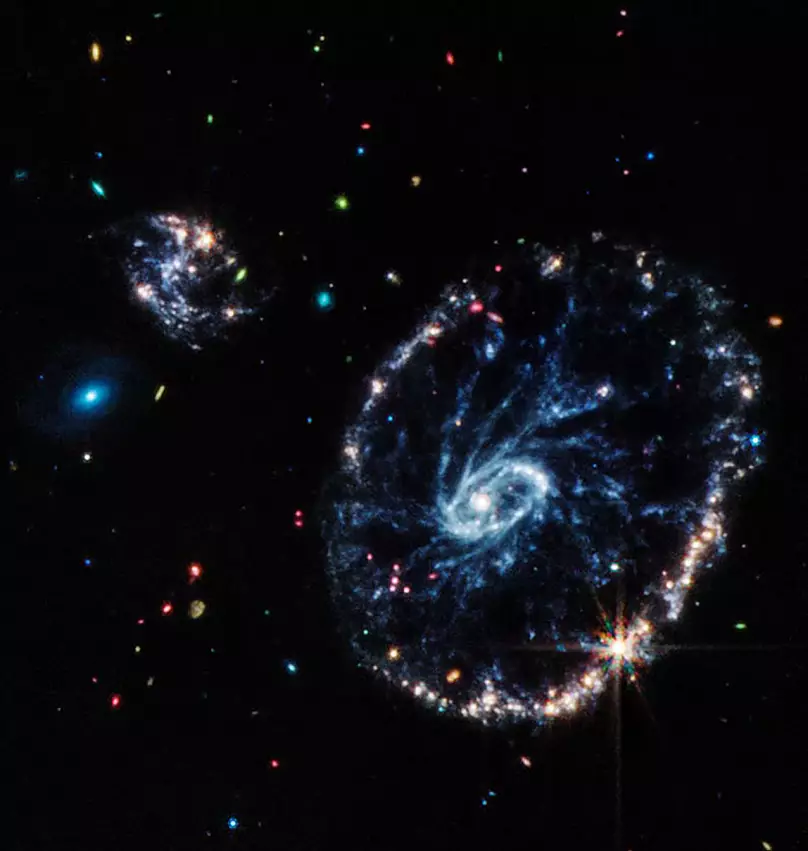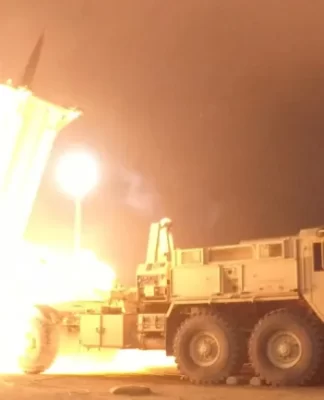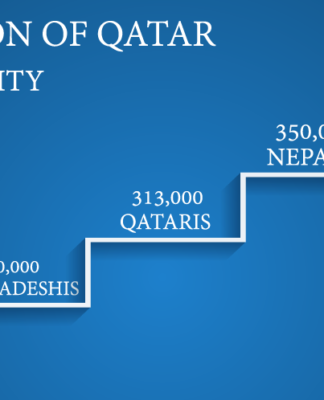The James Webb Telescope’s infrared cameras were able to look through the dust surrounding the Cartwheel Galaxy’s bright core.Copyright NASA, ESA, CSA, STScI, Webb ERO Production Team
MOBILITY
In pictures: The Cartwheel Galaxy and the other universe mysteries revealed by James Webb
By Giulia Carbonaro
•
Updated:
07/08/2022 – 12:57
Never before have we been able to view the universe the way the James Webb Telescope is showing it to us now.
Our naked eye would never be able to see what the telescope sees: travelling through light and space, James Webb can see the origins of the universe – something our minds can hardly begin to grasp.
Working a like a time machine, the first images shared by this powerful telescope on July 12 showed us far off galaxies, the death of stars, and the atmosphere of planets outside our solar system.
Jupiter and its moons like never seen before: NASA unveils new images from the James Webb Telescope
The latest image shared by the James Webb Telescope on August 2 takes another step further in our understanding of the universe, showing us what happens after two galaxies collide.
Peering through the cosmic dust created by the collision with its infrared cameras, the telescope gave us a shot of how the Cartwheel Galaxy is changing after a run-in with another smaller galaxy billions of years ago.
NASA, ESA, CSA, STScI, Webb ERO Production Team
The mid-infrared light captured by Webb’s MIRI infrared camera reveals fine details about the dusty regions and young stars within the Cartwheel Galaxy.NASA, ESA, CSA, STScI, Webb ERO Production Team
Scientists think that the Cartwheel Galaxy, a ringed galaxy over 500 million lightyears away from our planet which owes its name to its bright inner ring and colourful outer ring, was once part of a large spiral like the Milky Way, before another galaxy smashed through it.
The galaxy’s whole look, which reminded scientists of the wheel of a wagon, is due to that high-speed collision, according to NASA. From the centre of collision, the galaxy’s two rings have been expanding outwards, creating that rare ringed shape.
What can James Webb see in the Cartwheel Galaxy
Scientists have never before been able to see clearly into the chaos of the Cartwheel Galaxy and make sense of it.
The Hubble Space Telescope had already peered into the galaxy, but the amount of dust surrounding the Cartwheel Galaxy prevented the telescope from observing the phenomena taking place within the galaxy.
But now, thanks to the James Webb Telescope’ infrared cameras, scientists are able to look into the galaxy’s bright centre.
Jupiter and its moons like never seen before: NASA unveils new images from the James Webb Telescope
To do so, an image is created by combining Webb’s Near-Infrared Camera (NIRCam) and Mid-Infrared Instrument (MIRI), which are able to see through the dust and reveal wavelengths of light impossible to observe in visible light conditions.
The image obtained shows the formation of stars in the aftermath of the galaxies colliding – a process which is not yet completely understood.
NASA
This image captured by the James Webb Telescope shows the edge of a nearby, young, star-forming region NGC 3324 in the Carina Nebula.NASA
The bright core at the centre of the galaxy contains hot dust, says NASA, with the brightest areas being home to gigantic young star clusters.
What you can see on the outer ring, on the other hand, is the formation of new stars.
The Cartwheel Galaxy is still going through changes and will continue to transform, promising to reveal more secrets about how galaxies evolve over time, even though it might take billions of years.


























